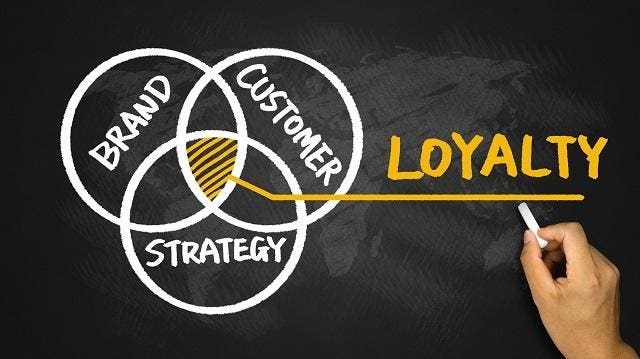The restaurant industry is highly competitive. With many dining options and increasing convenience, restaurants face the challenge of standing out and ensuring their guests return for more.
Today, I’m speaking with Savneet Singh, CEO and President of PAR Technology, to discuss how restaurant loyalty programs are evolving to meet the modern needs of businesses and diners.
Gary Drenik: Consumer behavior and expectations have been shifting in recent years, how has this impacted loyalty programs in the restaurant industry?
Savneet Singh: In the last couple of years, we’ve seen changes in consumer behavior within the restaurant industry, mainly due to the pandemic and the emergence of Millennial and Gen-Z consumers. These younger generations value convenience, online food delivery, and personalized experiences. There’s a strong desire to look beyond just the food and feel connected to the brand.
To make this new relationship work, loyalty is moving beyond traditional incentives, primarily discounting. Restaurants now understand the importance of providing seamless dining experiences, elevating the brand experience, and developing personalized touch points.
They’ve integrated loyalty apps with mobile payments and online ordering systems to make it easier for customers to order and enjoy rewards, encouraging them to visit more often and control their experience.
This has then allowed brands to take action with more data and re-think their own brand promise in today’s digital world.
Drenik: Many people are familiar with subscription-based models for e-commerce. How do subscriptions work in restaurant loyalty programs?
Singh: Subscription-based loyalty programs in the restaurant industry work much like those in the e-commerce world. Customers pay a regular fee, typically on a monthly or annual basis, to access exclusive benefits and rewards. These subscriptions can include various perks, such as discounts, free items, early access to new menu items, or even priority reservations.
The key to keeping subscribers happy is providing ongoing and meaningful value. What is more interesting, though, is that these programs can change how the consumer looks at the brand.
Drenik: As restaurants are competing for customers against not only other restaurants but also inflation, the return of student loan payments, and overall economic uncertainty, how are restaurants leveraging loyalty programs and subscription models to differentiate themselves and attract loyal customers?
Singh: Economic uncertainty is the time to invest!
According to a recent Prosper Insights & Analytics survey, 31% of people reported dining out less frequently because of the current state of the U.S. economy. Loyalty programs assist restaurants to retain price-conscious patrons.
In tough times, we build bonds that can accelerate during good times. In the face of growing competition and economic uncertainty, restaurants can use loyalty to not only bring guests in the door but also convert a transactional relationship into a long-term partner. While some use loyalty to boost sales, engagement and relationship building is another area where we see it prove value.
Drenik: With the increasing emphasis on personalized experiences, how can restaurants effectively utilize the valuable data loyalty programs provide to drive personalized customer experiences?
Singh: Simplistically, the more data you have, the more you know about your guest and the more you can delight. Restaurants can create unique and memorable experiences by using the data they collect through loyalty programs, such as order history, dining preferences, and visit frequency.
In practice, though, this is really hard! Data is flying at brands from dozens of systems, and the actual value add is pulling the signal from the noise. What’s the data point that matters? Then, what are the actions the brand can take with the data? Last, what’s our operational execution plan to make it work? This can be an iterative process but making it to a flywheel is where the best in the world excel.
The journey towards achieving this goal isn’t a straightforward path. It’s precisely why we find well-known brands like Burger King implementing substantial changes on a national scale, all in the pursuit of elevating their restaurant operations and meeting the increasing demands of their customers.
Drenik: What innovative approaches has PAR Technology seen restaurants take when designing loyalty programs to ensure they provide tangible value to consumers beyond just discounts? How does this creativity impact consumer engagement?
Singh: What’s great about loyalty programs is that every brand can have their own playbook. It allows your culture and vision to shine. We’ve seen brands leverage NFTs, special menu items and personalized in-store experiences to build their base.
What matters most is being authentic to your brand. If you’re a 100-year-old steak restaurant, own it! Don’t start giving out NFTs; build programs based on those 100 years. Loyalty programs enhance who you are, but they must be made on the foundation you already have.
Drenik: What are the best practices PAR uses for measuring the success of a loyalty program for its customers?
Singh: PAR Technology uses several best practices to measure the success of loyalty programs for its customers:
- ROI! Do the work to make sure the program is creating true ROI for both you and the customer. Is your customer LTV growing? Is your brand being elevated?
- Tracking membership growth: Seeing more people join is a good sign that a loyalty program works.
- Monitoring customer engagement and retention rates: Loyal customers tend to return and spend more.
- Analyzing the impact on average transaction values: A loyalty program should drive increased spending, and PAR monitors average transaction values to ensure this is happening.
- Industry Benchmarks PAR is in a unique position to broaden our customers’ view of performance and compare it to industry benchmarks to see how their program is performing in relation to their segment.
- Collecting and analyzing customer feedback: Surveys and reviews provide valuable insights into customer satisfaction with the loyalty program.
- Analyzing loyalty program data: Data on customer preferences and behaviors helps restaurants fine-tune marketing strategies.
- Fine-tune and optimize: Take action, measure impacts, and keep optimizing. Keep your program exciting – you can’t set it up and then neglect it.
Our recent loyalty program with Panda Rewards by Panda Express illustrates how these best practices produce positive outcomes.
Drenik: Thank you, Savneet, for sharing a look behind the counter and into the fast-paced world of restaurant operations!
Read the full article here










